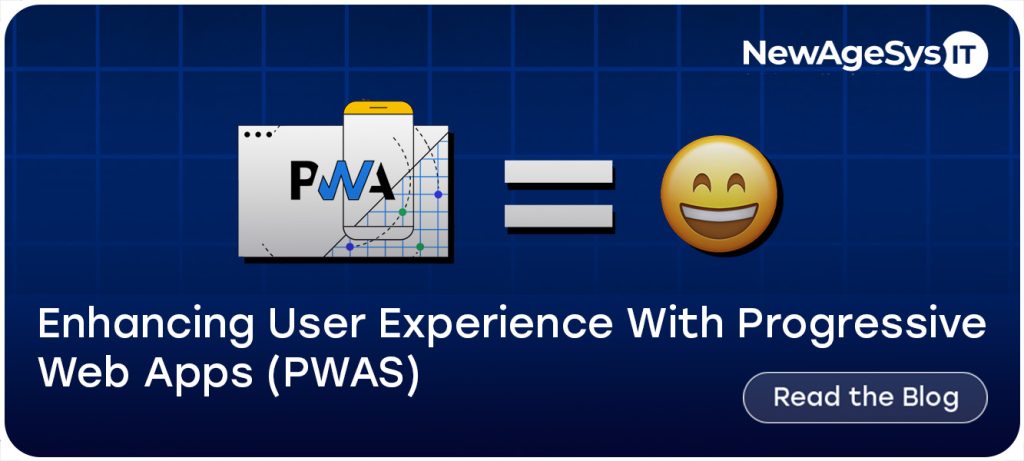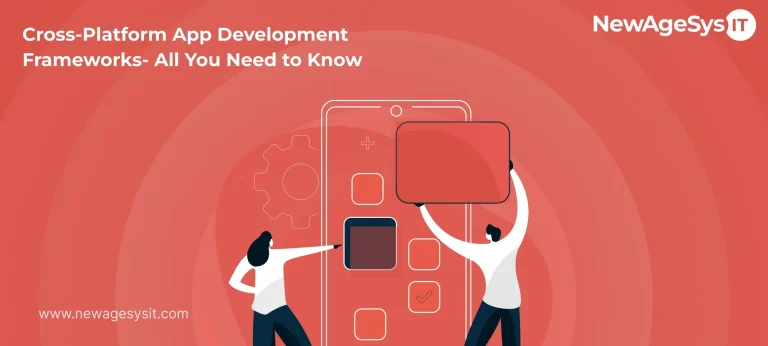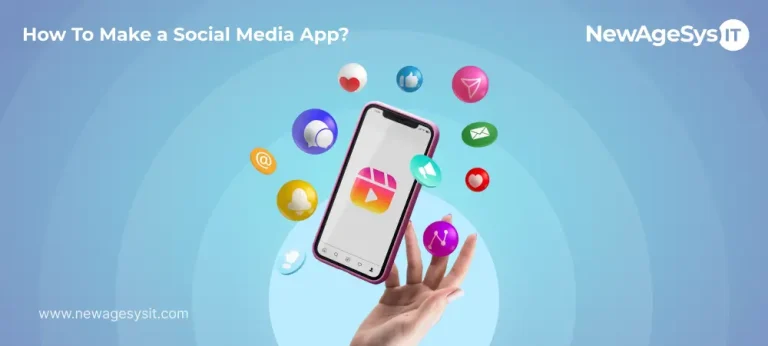What Are Progressive Web Apps (PWAs)?
Don’t underestimate Progressive Web Apps! Why? They’re becoming a game-changer in mobile development. This is because they take advantage of the latest web capabilities/technologies to provide experiences very similar to those found in native apps. These are built using technologies like HTML, CSS, and JavaScript but provide functionalities typically found only in native apps.
Furthermore, PWAs work on any platform that has a standards-compliant browser. The best thing about progressive web applications is the features of traditional websites and mobile apps, enabling a smooth user experience and engagement. These apps are known for their responsive nature because they are highly responsive, can function without an internet connection, and have a smooth look like native apps. The integration of Progressive Web Apps into web application development services can vastly improve the scope and efficiency of digital solutions, bridging the gap between web and native applications.
Why User Experience Matters for Websites and Apps
The Importance of User Experience
We all aim for better user experiences, right? That’s because a good experience is what keeps users coming back for more. If your site is easy and fun to use, people are more likely to stick around, play with it, and come back again. But if it’s frustrating, they’ll get annoyed, leave quickly (high bounce rates!), and you’ll miss out on potential customers. By making sure your site or app is smooth, efficient, and enjoyable, you build trust, loyalty, and a great reputation.
Web application development companies and web application development services are key to creating these awesome experiences. A progressive web app example is Pinterest, which reconstructed and launched its entire mobile site as a PWA. What’s more exciting is that this social network witnessed a 60% increase in main engagements and a 44% increase in user-generated ad revenue. Pinterest’s instance proves that using PWA will help you keep providing your clients with exactly what they need without making them wait.
How PWAs Improve User Experience
PWAs address common user experience issues with traditional websites and apps by offering several key benefits:
Responsiveness:
As the word suggests, PWAs are built to be fully responsive where these apps work on any device, without any issues in screen size or resolution. And yes, as you know, this can ensure a better user experience across smartphones, tablets, and desktops.
Offline Capability:
The next key characteristic of PWAs is the offline capability. And yes, this feature is a standout one. PWAs function in case of offline or in areas with a poor connection. Utilizing service workers, PWAs cache resources, thereby allowing for offline operation so people can still visit these contents/resources while offline without an internet connection.
App-like Interactions:
It is commonly known that PWAs give an experience similar to native mobile apps. It is because they can be installed on the home screen, have the ability to send push notifications, and also access device features including the camera and geolocation. What else does a user expect? This app-like behavior gives users a more engaging and interactive experience.
Fast Loading Times:
You already know that these apps function offline. So what do you think about the speed? These apps leverage efficient data loading techniques to ensure fast loading times, even on a slow network. This undoubtedly enhances user satisfaction and engagement.
Secure:
Security remains a question for every user. Here, these apps ensure that they are highly secure as they are served over HTTPS. It guarantees that all the communication between a user and the app is highly secure and prevents snooping and tampering.
Discoverable and Shareable:
Being discoverable sets a common goal for everyone. PWAs do great in this. They can be easily discovered through search engines and also shared via URLs, similar to traditional websites. This undoubtedly makes them highly accessible and easy to promote.
Companies that offer web application development services are increasingly leveraging these benefits of PWAs to create robust and user-friendly digital solutions. By incorporating these key features, they ensure that the end products deliver exceptional user experiences and meet modern web standards. Get a free consultation from NewAgeSysIT experts now!
Key Features of PWA That Enhance User Experience
Fast Loading Times and Performance
As we discussed Progressive Web Apps (PWAs) offer fast loading times and smooth performance by using service workers and caching mechanisms. So what are service workers? These are scripts that run in the background of a PWA, separate from the web page. The key function is that they manage all network requests, cache essential resources, and enable offline capabilities. On frequent visits, PWAs can load instantly by caching static assets and frequently accessed data, even during slower network speeds.
This caching method ensures that the app’s main components, including the user interface and critical content, are constantly accessible, resulting in a faster and more dependable user experience. Furthermore, PWAs can prioritize loading vital content first, lowering perceived load times and improving overall performance. This efficiency not only increases customer satisfaction but also boosts search engine rankings and engagement metrics.
Offline Access and Reliability
Web application development companies nowadays prefer PWAs because they can still be used even without the internet. By caching resources using service workers, PWAs can provide access to content and features even when users are offline or have an unreliable internet connection. This lets you access information and use some features even when you have a spotty connection or none at all.
Offline access is especially useful for customers in places with low connectivity or who encounter frequent network outages. It keeps users interested and decreases annoyance because they do not have to wait for a reliable connection to utilize the program. Moreover, this reliability fosters trust and encourages users to rely on the PWA for their needs, knowing that it will function consistently regardless of network conditions.
App-Like Experience with Native Features
PWAs are not limited to their functions, either; they provide an app-like experience with native features, that seamlessly bridge the gap between web and mobile applications. Here you can install it directly on a user’s home screen from the browser. This eliminates the need for app store downloads. After installation, they may be opened like any application giving one continuous and unified experience.
Features like push notifications, home screen installation, full-screen mode, etc contribute to giving app-like experiences. Are you thinking how it is? When coming to push notifications, PWAs can send notifications to users, that keep them updated and informed. Real-time updates, personalized messages, and reminders make the users engaged thus increasing interactions just like native mobile apps.
The next feature is Home Screen Installation where the Users can add PWAs to their device’s home screen, making it easily accessible with a single tap. This installation process is simple and doesn’t require navigating app stores, reducing friction and encouraging adoption.
Furthermore, PWAs can run in full-screen mode, providing an immersive experience without browser UI elements. This enhances the app’s look and feel, making it indistinguishable from native apps.
How to Get Started with Building a PWA for Your Website
Planning
The very first step to implementing a PWA for your website necessitates planning. Here, you need to define the goals and requirements. In this stage, you can identify what features are needed and what functionalities can be implemented to improve the user experience. Consulting with experienced web application development companies can be highly beneficial during this phase.
Development
Once you have set your goals, the next step is web application development. At NewAgeSysIT, our expert developers use web technologies like HTML, CSS, and JavaScript to build your PWA. Our team also implements service workers for offline functionality and caching. In addition, we create a Web App Manifest that helps you define the app’s appearance and behavior when installed on a user’s device. Partnering with professional web application development service providers ensures that your PWA is built to the highest standards.
Deployment
Testing your PWA is undoubtedly an essential part. Our expert quality assurance team will test your PWA on different devices and browsers to ensure it is compatible and performing well. We then deploy the app on a secure server and launch it upon your approval, making it accessible to users.
Conclusion
Progressive Web Apps are playing an increasingly important role in improving digital user experiences. They take the best parts of websites and mobile apps, to make things super fast, reliable, and fun to use. This keeps people happy and coming back for more. As more enterprises recognize the value of PWAs, we should expect rising use and innovation in this area, resulting in better user experiences throughout the web.
As one of the leading web application development companies, NewAgeSysIT offers comprehensive progressive web application development services from start to finish. We’ve successfully delivered hundreds of advanced solutions worldwide, across all key industrial verticals. Contact us for a free consultation and discover how we can enhance your digital presence with PWAs.
























